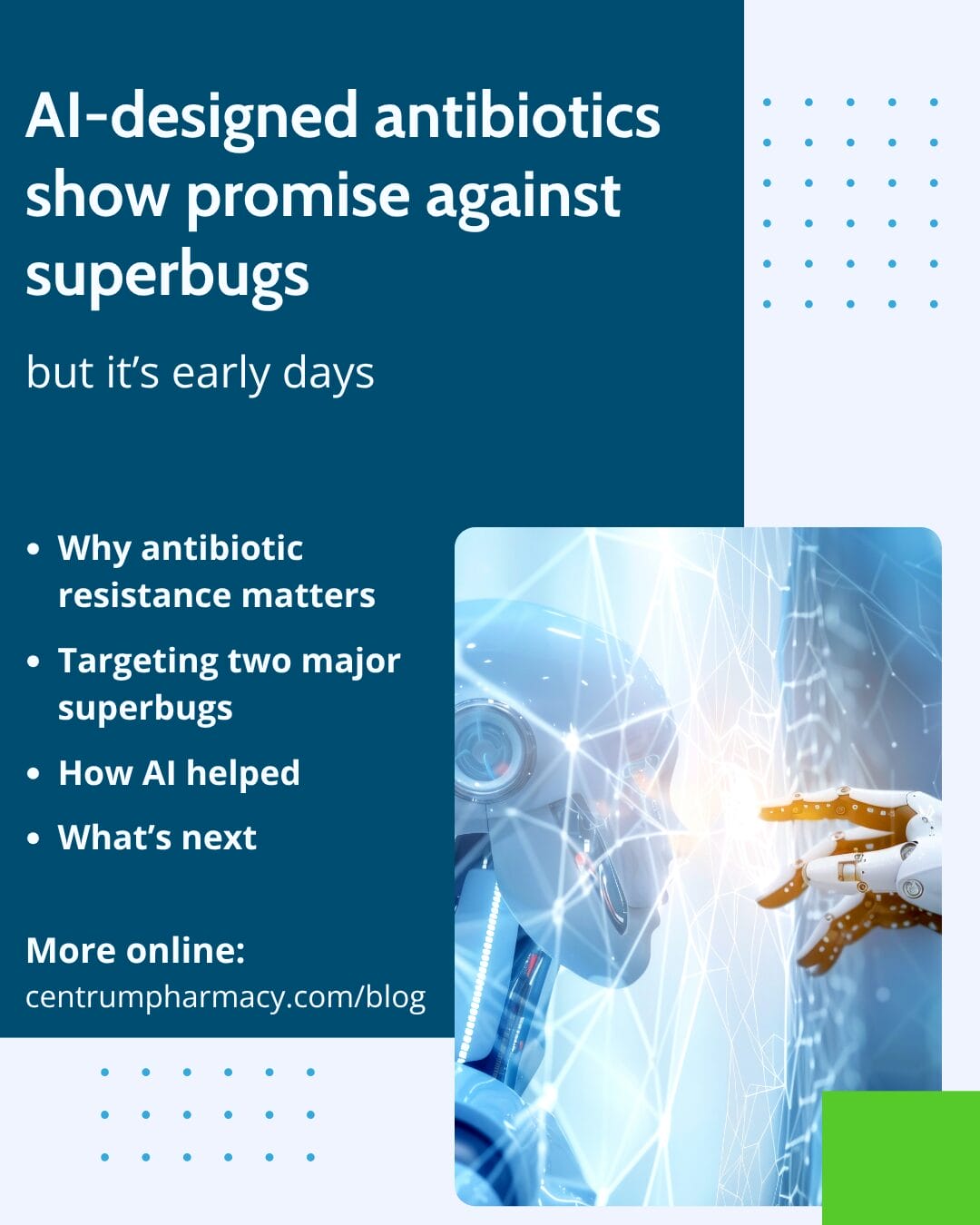Researchers at the Massachusetts Institute of Technology (MIT) have recently used artificial intelligence (AI) to design two entirely new antibiotics effective against antibiotic-resistant bacteria, also known as “superbugs.” While this is a significant scientific achievement, it’s important for patients and healthcare providers to understand that these drugs are still years away from being available for real-world use.
Why antibiotic resistance matters
Antibiotic resistance is a growing global health threat. Overuse of antibiotics in both medicine and agriculture has accelerated the evolution of bacteria that can survive treatments that used to work. Currently, antibiotic-resistant infections contribute to roughly 5 million deaths globally each year and directly cause over 1.2 million deaths.
Economically, superbug infections could cost the world more than $2.5 trillion in lost output by 2050. Access to new antibiotics is also uneven, disproportionately affecting lower-income countries where resistant infections spread fastest.
Targeting two major superbugs
The MIT team focused on two particularly challenging bacteria:
- Neisseria gonorrhoeae: The cause of gonorrhoea, a sexually transmitted infection that has developed high resistance to existing antibiotics. Over 82 million new cases were reported worldwide in 2020.
- Methicillin-resistant Staphylococcus aureus (MRSA): Known as “golden staph,” this resistant bacteria can cause skin infections and serious organ infections. Infected patients face a 64% higher risk of death than those infected with non-resistant strains.
How AI helped
The researchers used AI in two distinct ways to design new antibiotics:
- Building on existing compounds for gonorrhoea: The AI analyzed a large database of compounds already known to fight N. gonorrhoeae, then generated 80 new candidates by adding chemical structures step by step. Of these, two were synthesized in the lab, and one showed strong activity against the bacteria in both petri dishes and mouse models.
- Starting from scratch for MRSA: Using only simple molecules like water and ammonia, the AI predicted entirely new chemical structures that could attack MRSA’s cell defenses. Of 90 candidate molecules, 22 were synthesized, with six showing potent antibacterial effects. One compound successfully treated MRSA skin infections in mice.
Why this matters—and what’s next
The AI-designed antibiotics aren’t just new—they work differently from existing drugs, which could make it harder for bacteria to develop resistance. Traditionally, new antibiotics are derived by modifying older ones, so this represents a potential breakthrough in drug design.
However, these antibiotics still face major hurdles:
- Human clinical trials: Rigorous safety and efficacy testing is needed, likely taking several years.
- Financial challenges: These drugs would likely be “last resort” treatments, limiting their market potential and investment incentives.
Despite these challenges, this research demonstrates the potential of AI to accelerate the discovery of life-saving drugs. At Centrum Pharmacy, we remain committed to helping patients navigate the world of antibiotics safely, ensuring that when new treatments do arrive, they are used appropriately and effectively.
Stay Connected with Centrum Pharmacy!
If you found this article helpful, don’t forget to like, share, and Follow to stay up to date on our latest health tips, pharmacy updates, and wellness advice.
Come for the Convenience, Stay for the Service.
Caring for Your Family Since 1999
Disclaimer: The medical information on this site is provided as an information resource only and is not to be used or relied on for any diagnostic or treatment purposes. This information does not substitute for professional diagnosis and treatment. Please do not initiate, modify, or discontinue any treatment, medication, or supplement solely based on this information. Always seek the advice of your healthcare provider first. Full Disclaimer.




